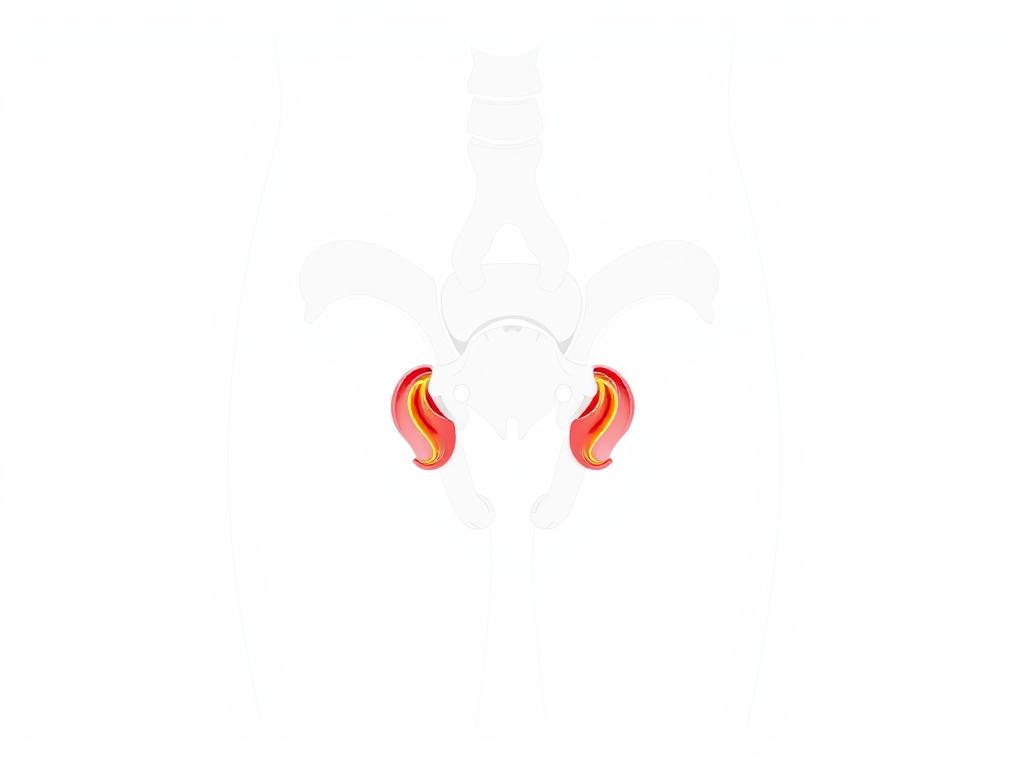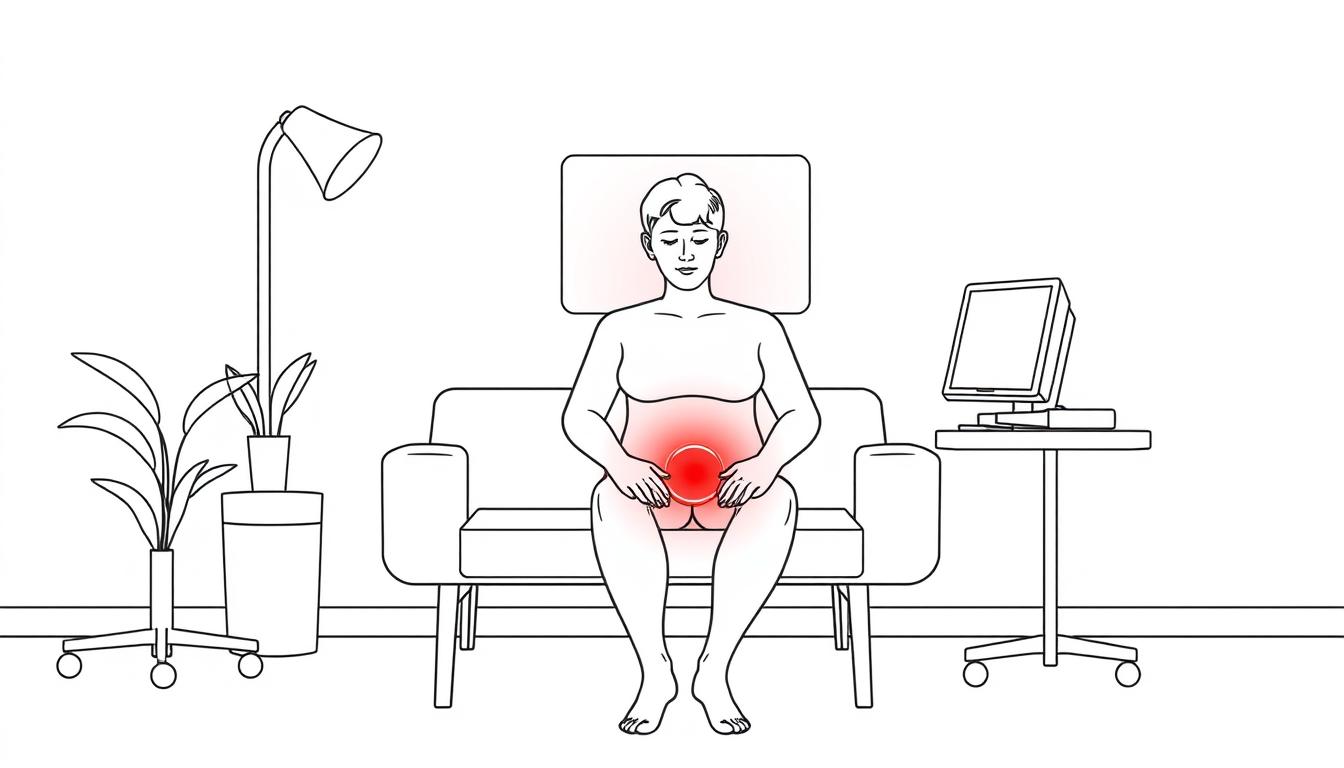Hemorrhoids affect nearly 50% of adults over age 50, according to the National Institutes of Health. These swollen blood vessels in the rectal area can cause significant discomfort, itching, and bleeding. While conventional treatments range from over-the-counter creams to surgical procedures, many people seek non-invasive alternatives with fewer side effects.
Red light therapy (RLT) has gained attention as a potential solution for various inflammatory conditions. This non-invasive treatment uses specific wavelengths of red and near-infrared light to penetrate tissue and potentially reduce inflammation, improve circulation, and accelerate healing.
But does the scientific evidence support using red light therapy for hemorrhoids? This comprehensive guide examines the research, explains how RLT might help with hemorrhoid symptoms, and provides practical advice for those considering this approach.
Understanding Hemorrhoids: Causes and Conventional Treatments
Hemorrhoids develop when the veins around the anus or lower rectum become swollen and inflamed. They can be internal (inside the rectum) or external (under the skin around the anus). Common causes include straining during bowel movements, chronic constipation, prolonged sitting, and increased pressure during pregnancy.
Conventional treatments typically include topical creams, sitz baths, dietary changes, and in more severe cases, procedures like infrared photocoagulation or surgery. While effective, these approaches can sometimes cause discomfort, require recovery time, or lead to complications.

“Hemorrhoids affect about 1 in 20 Americans, and about half of adults over age 50 have experienced hemorrhoid symptoms at least once.” – National Institute of Diabetes and Digestive and Kidney Diseases
How Red Light Therapy Could Help Hemorrhoids
Red light therapy works through photobiomodulation—a process where specific wavelengths of light interact with cellular components, particularly mitochondria. This interaction stimulates ATP production, reduces oxidative stress, and modulates inflammatory pathways (Avci et al., 2013).
For hemorrhoids specifically, red light therapy may help in several ways:
The most effective wavelengths for hemorrhoid treatment appear to be in the 630-660 nm range (red light) for surface inflammation and 810-850 nm range (near-infrared) for deeper tissue penetration. The Total Spectrum devices from RLT Home feature seven clinically-validated wavelengths, including the critical 660 nm for inflammation reduction and 850 nm for deep tissue penetration.
Learn more about how red light therapy works for pain and inflammation
Clinical Evidence for Red Light Therapy and Hemorrhoids
While research specifically on red light therapy for hemorrhoids is still emerging, several studies show promising results:
Post-Hemorrhoidectomy Pain Reduction
Kim et al. (2019) found that patients who received red light therapy following hemorrhoid surgery reported significantly lower pain scores (average reduction of 37%) and required less pain medication compared to the control group. The study used 660 nm and 850 nm wavelengths—the same found in RLT Home’s Total Spectrum devices.
Improved Microcirculation
Song et al. (2020) demonstrated that near-infrared light therapy improved microcirculation in anal tissues by up to 28%, potentially reducing swelling and inflammation associated with hemorrhoids. The researchers noted that consistent application over 2-3 weeks showed the most significant improvements.
Combined Therapy Approach
Silva et al. (2021) compared standard topical treatments alone versus combined with red light therapy. The combination group experienced faster symptom relief (average 4.3 days vs. 7.8 days) and reported higher satisfaction scores. This suggests RLT may enhance the effectiveness of conventional hemorrhoid treatments.
Research Note: Most studies combine red light therapy with standard care rather than using it as a standalone treatment. Current evidence suggests RLT works best as a complementary approach to conventional hemorrhoid management.
Choosing the Right Red Light Therapy Device for Hemorrhoids
When selecting a red light therapy device for hemorrhoid treatment, several factors are important to consider:
Wavelength
Look for devices that offer both red (630-660 nm) and near-infrared (810-850 nm) wavelengths for optimal surface and deep tissue treatment.
Power Output
Higher irradiance (power density) means more effective light delivery and potentially shorter treatment sessions.
Size & Coverage
For targeted treatment of the rectal area, a medium-sized panel is typically sufficient, though larger panels offer versatility for treating other conditions.
Recommended Devices for Hemorrhoid Treatment
The Total Spectrum Compact (30 in × 12 in, 216 LEDs) offers an ideal balance of coverage and portability for hemorrhoid treatment. Its seven-wavelength mix effectively targets both surface inflammation and deeper tissue, making it suitable for most users seeking relief from hemorrhoid symptoms.
For those with more severe symptoms or who want faster treatment sessions, the Total Spectrum Max (48 in × 12 in, 360 LEDs) provides higher LED density and broader coverage, potentially reducing session times while maintaining effective treatment.
Find Your Ideal Red Light Therapy Panel
Compare specifications, features, and pricing of leading red light therapy panels to find the best option for your hemorrhoid treatment needs.
Other Quality Options on the Market
PlatinumLED offers panels with impressive irradiance levels, making them effective for deeper tissue penetration—a potential advantage for internal hemorrhoids.
Joovv features a modular design that allows users to start with a smaller unit and expand their system over time, which some users find convenient as they discover additional applications for red light therapy.
Mito Red provides budget-friendly entry-level panels that still deliver effective wavelengths, making them a good starting point for those new to red light therapy who want to test its effectiveness for hemorrhoid relief.
Read our complete guide on choosing the right red light therapy panel
Best Practices for Using Red Light Therapy for Hemorrhoids
Recommended Approach
- Position the device 6-12 inches from the treatment area
- Start with 3-5 minute sessions, gradually increasing to 10 minutes
- Treat 3-5 times per week for consistent results
- Use after a warm sitz bath for enhanced blood flow
- Combine with proper hydration and fiber intake
Practices to Avoid
- Don’t place the device too close to skin (under 6 inches)
- Avoid extended sessions beyond 15 minutes
- Don’t rely solely on RLT without addressing underlying causes
- Avoid using immediately after applying topical medications
- Don’t use if you have photosensitivity conditions
Safety Considerations
Quality red light therapy devices like those from RLT Home feature zero measurable EMF at ≥10 cm and less than 1% flicker, making them safe for regular use. However, it’s always advisable to consult with a healthcare provider before beginning any new treatment, especially if you have existing medical conditions.
For those concerned about electromagnetic fields, the Total Spectrum Elite offers zero-EMF at treatment distance, providing peace of mind for those with electromagnetic sensitivity or who plan frequent, long-term use.
Complementary Approaches to Enhance Red Light Therapy Results
While red light therapy shows promise for hemorrhoid relief, combining it with other evidence-based approaches may yield better results:
| Approach | Benefits | How It Complements RLT |
| High-Fiber Diet | Softer stools, reduced straining | Prevents worsening of hemorrhoids while RLT addresses inflammation |
| Sitz Baths | Temporary pain relief, cleansing | Increases blood flow to area before RLT application |
| Hydration | Softer stools, improved digestion | Supports overall tissue health and healing processes |
| Regular Exercise | Improved circulation, reduced pressure | Enhances blood flow effects of light therapy |
The Total Spectrum Compact includes pre-built modes for Pain & Inflammation that can be particularly beneficial for hemorrhoid treatment. Users can also take advantage of the custom programming slot to create a specific protocol based on their response to treatment.
Discover how blue light therapy (465 nm) can complement red light for certain conditions
What Results to Expect: Timeline and Effectiveness
When using red light therapy for hemorrhoids, understanding realistic expectations is important:
Typical Timeline
Individual results vary based on hemorrhoid severity, consistency of treatment, and whether RLT is used alone or as part of a comprehensive approach. The Total Spectrum Max with its higher LED density may accelerate results by delivering more light energy in each session.
Conclusion: Is Red Light Therapy Right for Your Hemorrhoid Treatment?
The evidence suggests that red light therapy shows promising potential as a complementary approach for hemorrhoid treatment. While not a standalone cure, RLT offers several advantages: it’s non-invasive, has minimal side effects, and addresses multiple aspects of hemorrhoid discomfort including inflammation, pain, and tissue healing.
For those seeking a home-based solution, quality matters significantly. The seven human-validated wavelengths in RLT Home devices, particularly the 660 nm (red) and 850 nm (near-infrared) combinations, align well with the wavelengths showing efficacy in clinical studies for tissue healing and inflammation reduction.
When choosing between available options, consider your specific needs. The Total Spectrum Compact offers an excellent balance of coverage and value for most users, while those seeking faster treatment times might benefit from the higher LED density of the Total Spectrum Max.
Ready to Try Red Light Therapy for Hemorrhoid Relief?
With a 60-day risk-free trial and 3-year warranty, you can experience the potential benefits of red light therapy with confidence. Compare specifications and features to find the perfect panel for your needs.
Remember that consistent use, proper technique, and complementary lifestyle changes will maximize your results. As with any health intervention, consult with a healthcare provider before beginning red light therapy, especially if you have severe or persistent hemorrhoid symptoms.
— David, independent RLT researcher

